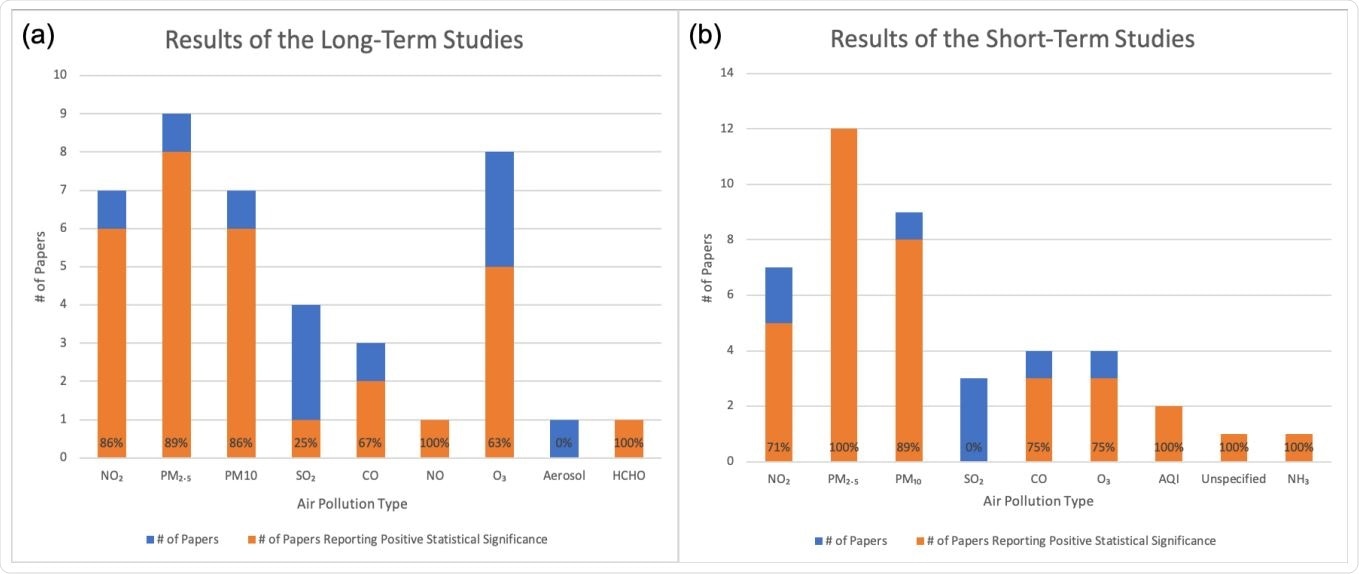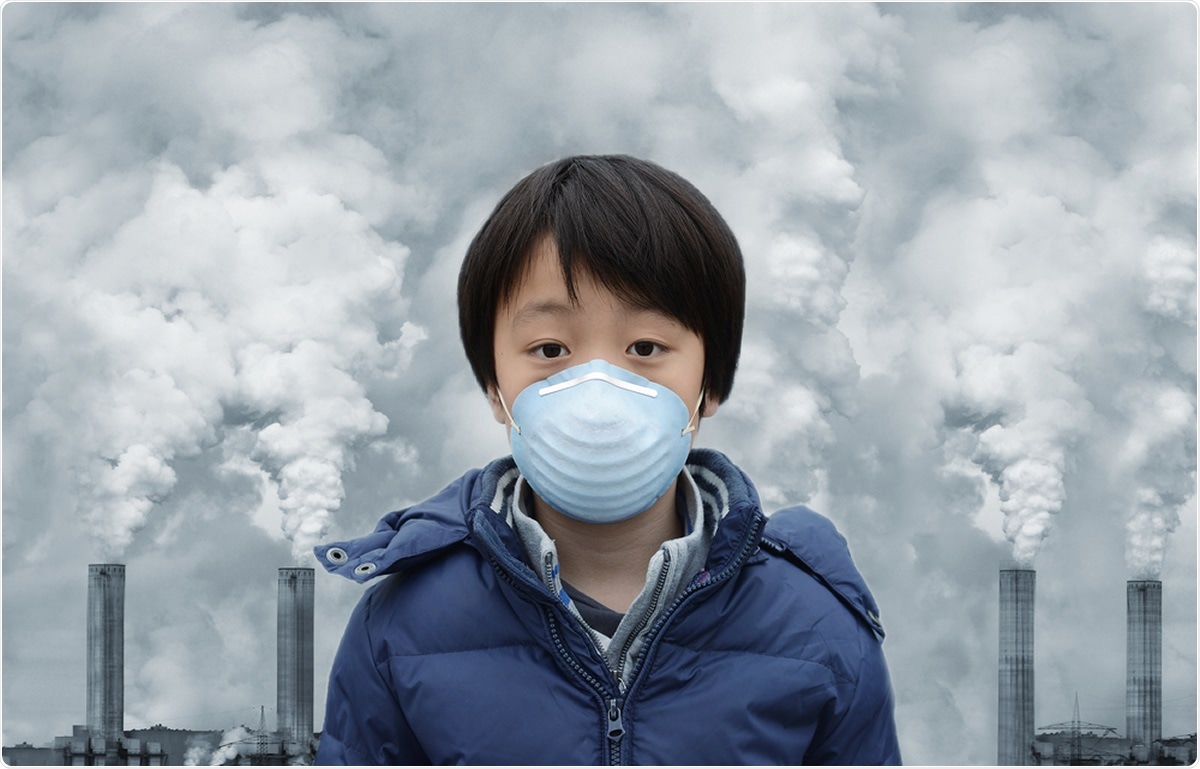Scientific review on on link between air pollution and COVID-19
Researchers at Harvard T. H. Chan School of Public Health, Harvard University, and the Dana-Farber Cancer Institute have conducted a “state-of-the-science” review of the evidence available on potential associations between exposure to air pollution and health outcomes in coronavirus disease 2019 (COVID-19).
Francesca Dominici and colleagues say previous reviews have been limited in scope and that this review is unique because both short and long-term studies are included, methodological challenges are presented, and additional research areas are highlighted.
A pre-print version of the paper is available on the server medRxiv*, while the article undergoes peer review.
Air pollution contributes to respiratory infection and various chronic diseases
As the COVID-19 pandemic continues to sweep the globe, 23.3 million people have already been infected with severe acute respiratory syndrome 2 (SARS-CoV-2), and more than 806,000 have died.
A large number of studies have provided strong evidence to support that short- and long-term exposure to air pollution increases the risk of mortality and morbidity. Air pollution contributes to respiratory infection and various chronic health conditions, including heart disease, chronic obstructive pulmonary disease, and diabetes.
“Understanding the relationship between short- and long-term exposure to air pollution and adverse COVID-19 health outcomes is crucial for developing solutions to this global crisis,” say Dominici and team.
What did the study involve?
For this review, the team searched PubMed, Embase, Cochrane, Web of Science, medRxiv, and bioRxiv for preliminary epidemiological studies looking at the association between air pollution and COVID-19 health outcomes.
A total of 28 papers were included, which were categorized as long-term studies, short-term time-series studies, and short-term cross-sectional studies.
Of the 28 studies, 27 reported a statistically significant positive association between exposure to air pollution and adverse health outcomes in COVID-19.
Twelve cross-sectional studies examining the effect of long-term air pollution exposure hypothesized that this exposure negatively affects respiratory health, which increases susceptibility to infection with SARS-CoV-2.
Nine time-series studies looked at the short-term effects of exposure and compared-day-today variations in air pollution with those of COVID-19 health outcomes.
Eight cross-sectional studies also focused on short-term effects and compared pollution levels during the outbreak or shortly before it, with COVID-19 health outcomes.
Both these time series and cross-sectional studies hypothesized that short-term exposure to air pollution increases the transmission of SARS-CoV-2 or increases the severity of COVID-19.

Problems with the studies
The researchers point out that the studies differed significantly in their use of statistical models, datasets, confounders, and COVID-19 health outcomes.
Across the 12 long-term cross-sectional studies, five different COVID-19 health outcomes were used, and across the 16 short-term studies, seven different outcomes were used.
The studies also differed in the type of air pollution exposures analyzed. Eleven of the 12 long-term studies looked at data collected over time periods ranging from 1 to 16 years. Ten of them assessed air pollution levels or air quality index values, and three assessed the number of times daily limits were exceeded.
Furthermore, 12 long term studies, 9 time-series studies, and 3 cross-sectional studies did not adjust for covariates and confounders.
Eight different types of statistical models were also used across the 12 long-term studies, and nine different types were used across the 16 short-term studies.
“While researchers want to disseminate their results rapidly to accelerate knowledge about this pandemic as it unfolds, this practice presented us with many challenges when trying to understand the results of the selected studies and their implications,” say Dominici and team.
Room for improvement
The researchers say various aspects of the methodologies need to be improved.
The validity of the data on health outcomes, for example, is questionable, says the team.
“There is no uniform case definition of a COVID-19 death, and there are also diagnostic errors in COVID-19 cases,” writes Dominici and colleagues. “This could potentially contribute to a high degree of over- or underreporting.”
Of the 28 studies, 27 were also ecological rather than individual-level studies. Ecological studies involve statistical data interpretation that is based on inferences about the nature of individuals that are deduced from inferences about a group those individuals belong to. Analysis of ecological data does not generally adjust for individual risk factors such as age, gender, ethnicity, or occupation.
Increasing the reliability of this type of research in this area would require access to nationally representative, individual-level data on COVID-19 health outcomes, including data on people’s residential addresses, demographics, and confounders.
“This is an enormous challenge that will require many privacy, legal, and ethical trade-offs,” writes the team.
Other methodological challenges include geographic variability in testing, mitigation measures, and pandemic stage, and exposure error relayed to spatial resolution, say the researchers.
Future directions
Dominici and colleagues say the main aim of this review was to establish ways to start overcoming the numerous methodological challenges faced in environmental health epidemiology studies.
However, just as important is the identification of new opportunities, they add.
“For example, the extreme measures implemented during the lockdown are providing new research opportunities to investigate important questions regarding achievable reductions in air pollution exposure and health effects,” say the authors.
“These lockdown measures provide a unique opportunity to exploit the features of a quasi-experimental design to assess the extent to which different pollutants have declined and estimate the potential ‘beneficial’ effects of these declines on health outcomes,” they conclude.
*Important Notice
medRxiv publishes preliminary scientific reports that are not peer-reviewed and, therefore, should not be regarded as conclusive, guide clinical practice/health-related behavior, or treated as established information.



